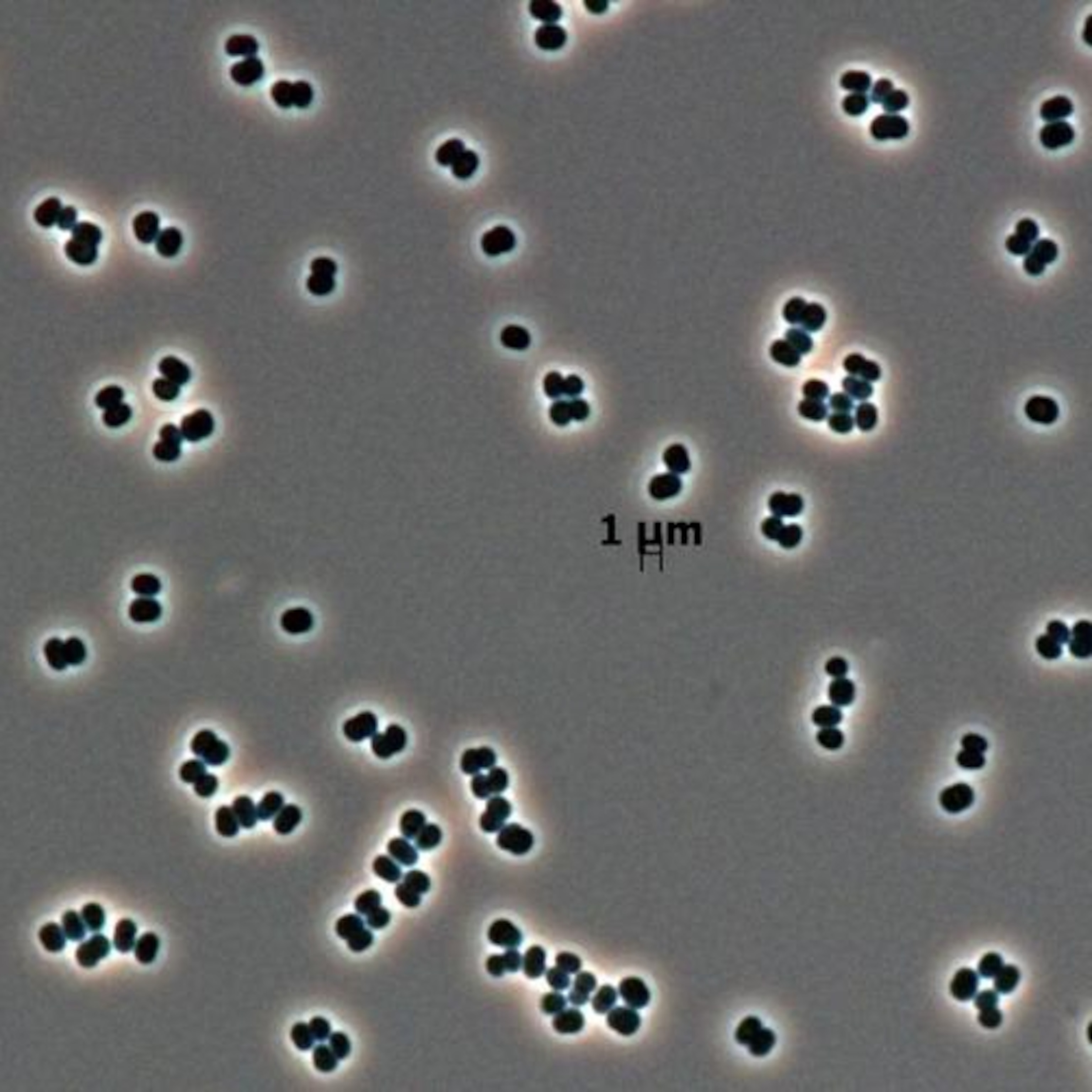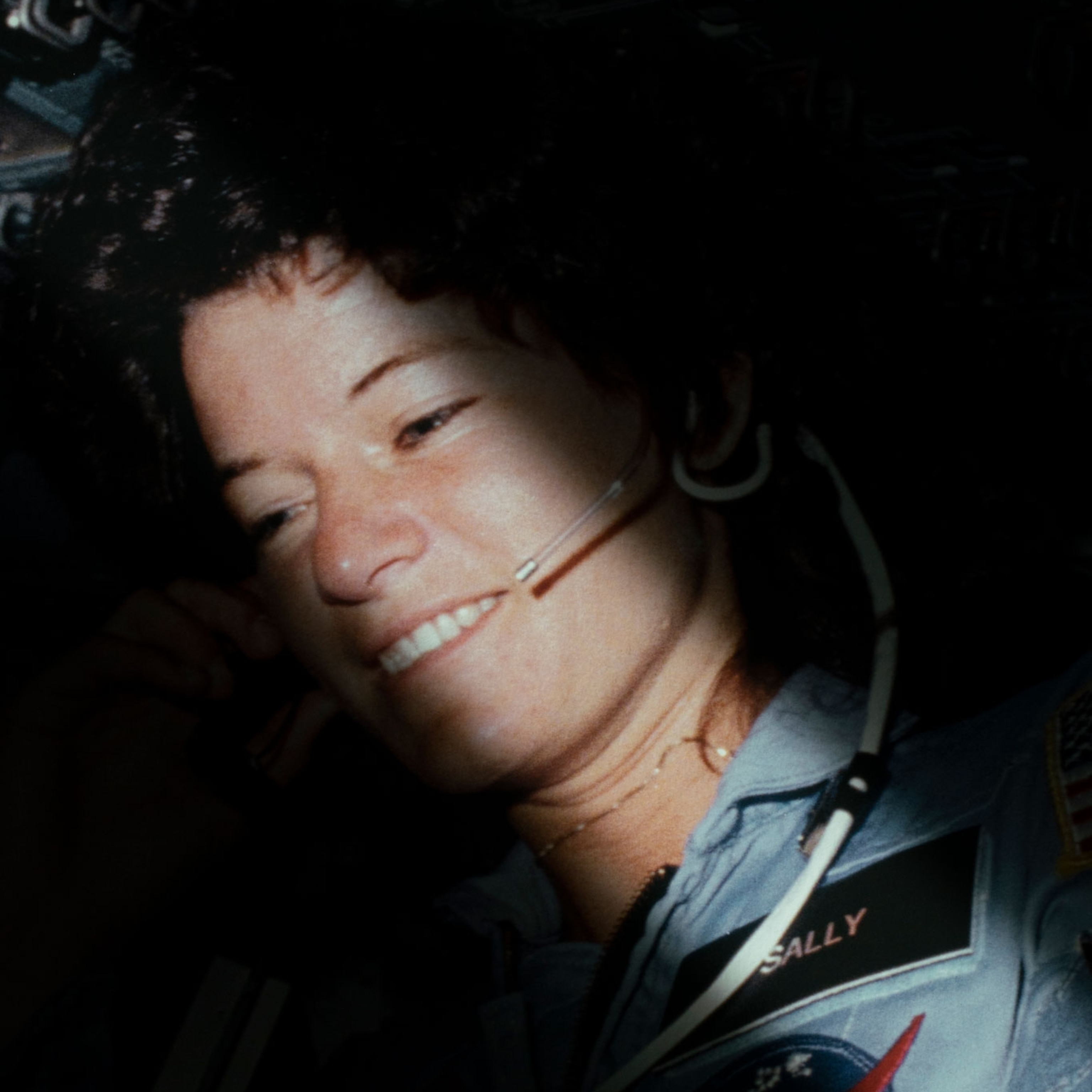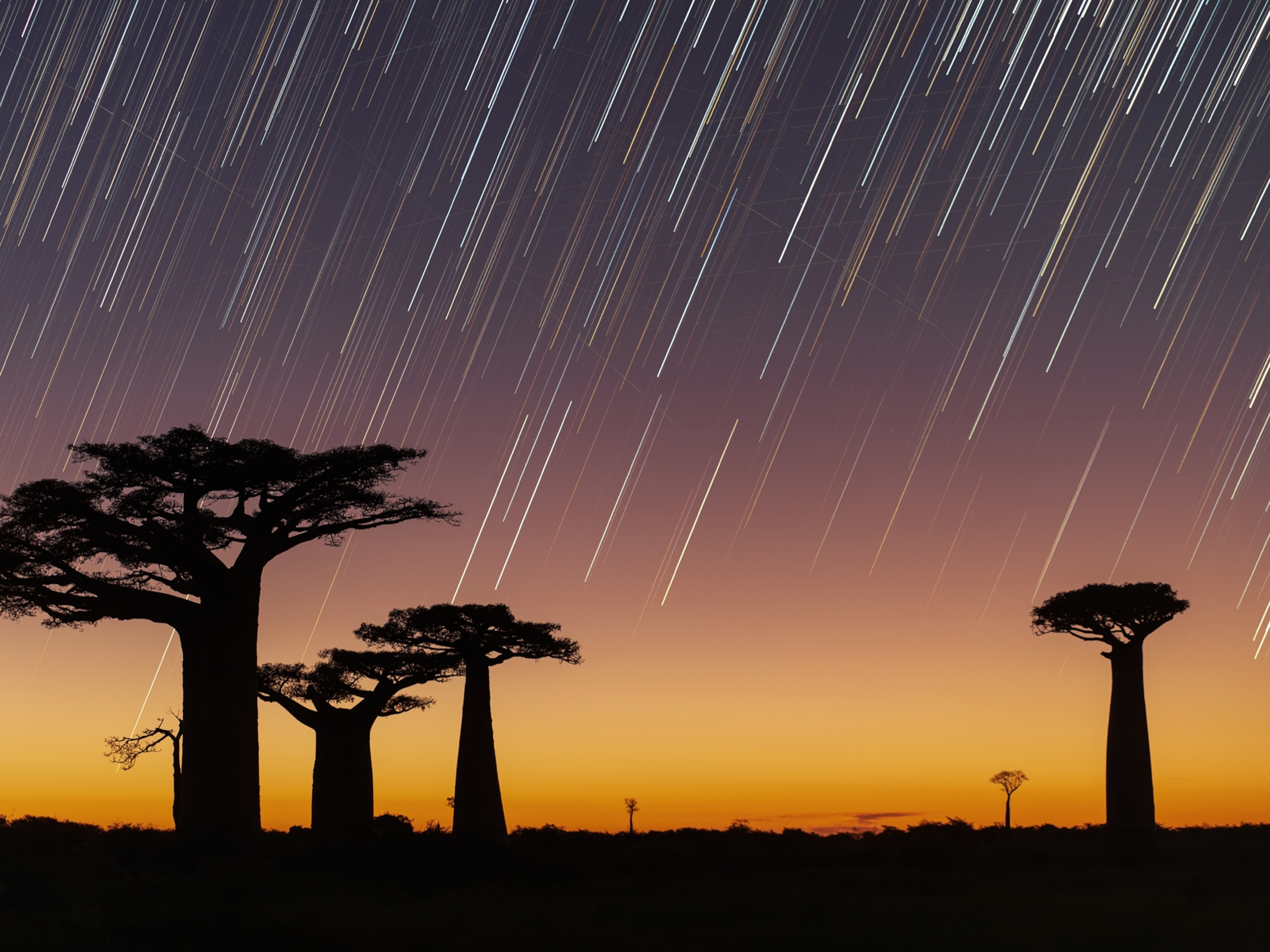
Remembering near-death dramas on a Russian space station
Once the largest human-made object in space, the Russian space station Mir crashed to Earth 20 years ago this month, ending 15 years of triumph and near-tragedy.
There were 24 minutes of oxygen left in the space station Mir. Michael Foale’s ears were popping from pressure loss as precious air hissed through a hole in the hull.
He sat alone in Mir’s escape pod—a Soyuz space capsule—waiting for his fellow crew members, two Russian cosmonauts, to join him. But they were frantically trying to locate and seal the puncture wound inflicted moments earlier when an uncrewed resupply vehicle collided with one of the linked nodes that formed Mir.
Waiting there in the dark, powerless Soyuz, Foale remembered what he’d been told throughout his training: If you have less than 30 minutes of oxygen left, it’s time to abandon ship.
Minutes ticked away. Still no sign of the crewmen—although Foale could hear them shouting in Russian. “It was clear,” he says today, “these two were not about to leave.”
At that moment, Mir was a dying, 11-year-old spacecraft, already more than five years beyond its expected lifespan. And yet its Russian creators would use everything but bubble gum to keep the station in orbit another four years. Finally, on March 23, 2001, they reluctantly induced their beloved craft to dip into Earth’s atmosphere, where it met a fiery end above the South Pacific Ocean.
Mir had its beginnings during the Soviet Union’s dark days following America’s moon landings. Determined to save face, the Soviets turned their attention to establishing space stations. Their aim was to permanently occupy Earth’s “high ground” where they could conduct extended microgravity experiments and—of greater importance to the Soviet military—observe the planet’s surface.
Eight months before America’s final moonwalk in 1972, the Soviets launched a rudimentary space station, Salyut 1. Fourteen years later, Mir became the first modular space station, one that saw successive missions continue to add components—a total of six.
In the U.S., NASA desperately wanted a space station of its own. But with the Space Shuttle program consuming most of its budget, the space agency’s only hope was to get a partner to help pay for it. That partner would be the Soviet Union.
Unfortunately, the Soviets were struggling to pay for their own space program. In fact, when Russia’s economy collapsed in 1989, the orbiting Mir crew wondered for a short time whether anyone would remember to bring them back to Earth.
Still, in 1993, Russia and the U.S. jointly announced plans for the International Space Station (ISS). Both countries would, in theory, pour resources and expertise into the new craft. The agreement ensured that the ISS would go forward—but it also led to years of fiduciary sleight-of-hand by NASA, which knew from the outset there was no way the cash-strapped Russians could pay their share of the cost.
“Congress absolutely forbade NASA from giving money to the Russians,” says Joseph Gutheinz, who was NASA’s Senior Special Agent to the Inspector General at the time. “But they could pay the Russians for services rendered. That led to us paying them hundreds of millions for the privilege of having our astronauts fly on board Mir.”
Now a Houston defense lawyer, Gutheinz had a ringside seat as NASA continued to send astronauts to Mir, even though it was a nightmare of leaking pipes, short-circuiting electronics, and flourishing mold.
“I kept hearing the same thing,” he says. “The only reason we were funneling this money to Russia was so they could keep up with their timetable for the ISS.”
In all, the U.S. poured some $1.5 billion into the Russian effort, calling into question just what the Americans “saved” by partnering with their old enemies.
America’s first three Mir visitors—Norman Thagard, Shannon Lucid, and John Blaha—enjoyed relatively uneventful tours in 1995 and 1996. Physician Jerry Linenger was no doubt expecting much the same when he rode the Space Shuttle to Mir in January 1997. But barely a month later, he came dreadfully close to becoming America’s first casualty in space.
Smoke and mirrors
A flock of eight-year-olds is fluttering around me as we enter a long, low building behind Tommy Bartlett’s Exploratory, a hands-on children’s museum and tourist destination in Wisconsin Dells, Wisconsin. As my eyes adjust to the darkness, I’m struck by the hulking, weirdly incongruous presence of Mir lying on its side, its long body disappearing into the distance.
This is no mock-up. It’s an actual Mir central node, one of three base station units built by the Soviets (the other survivor is stashed in a Russian warehouse). Its route to Wisconsin began when someone representing a Russian dealer offered to sell a rare automobile to the late Tommy Bartlett, owner of the Exploratory. Bartlett didn’t take the car, but he bought something else the guy was selling: this piece of Russian space history.
In its heyday Mir was the largest human-made object in space. This central node is about the size of a school bus, with a porthole leading to a chamber that has five ports, each of which would have led to a separate module. (This astronaut has some advice on surviving in a cramped space.)
On one wall is mounted a guitar that was launched with Mir to provide homegrown, on-board entertainment. Hanging nearby, looking like a pair of scuba tanks, are Mir’s oxygen generators, which burned cartridges of lithium perchlorate to produce oxygen. That’s right: burned. In a tight, cluttered area. In the vacuum of space. What could go wrong?
On February 23, 1997, Linenger and his comrades found out. One of these generator canisters burst into flames, filling Mir with acrid smoke. The crew members could barely see their hands in front of their faces, and they struggled to don gas masks—some of which didn’t work. They went to pull fire extinguishers from the walls and found them strapped so tightly in place they were virtually immovable.
“Russia reported that the fire lasted 90 seconds,” says Gutheinz. “It actually went for 14 minutes. Also, Russia said the cosmonauts doused the fire. It actually burned out on its own.”
Linenger, a Navy-trained physician, treated his comrades’ burns. He filed an incident report with NASA, and was distressed to hear the U.S. space agency pretty much repeat the Russians’ storyline.
“The NASA view was this incident was no big deal, and it was excellent training for the ISS,” says Gutheinz. “The Russians never told them there had been [other] fires before that one.”
Minutes from dying
When astrophysicist Michael Foale traded places with Linenger on May 17, 1997, residue from the fire was still on Mir’s walls. As he relates the story to me, the British-born astronaut is at home in Colorado, where he and his wife Rhonda have been isolated since COVID-19 first struck.
“For me, it’s been kind of like being on the space station,” he jokes.
At first Foale had no misgivings about spending more than four months on Mir, despite the recent fire. “I thought it was bizarre but that it had been resolved,” he says. “I figured, that’s never gonna happen again.”

Foale became an astronaut soon after the Challenger disaster in 1986. “I always felt that the bad things happen at launch,” he says. “Once you’re up there, you’re really in a more quiescent situation.”
A month after Foale arrived on Mir, that quiescence cracked.
For years, a series of uncrewed cargo spacecraft—each called Progress—had delivered supplies to Mir, and over the course of those years the risky docking maneuver had always been accomplished using technology owned by the Ukrainian government. But the cash-strapped Russians, unwilling to pay the Ukrainians, decided to experiment with a manual docking procedure. There would be no telemetry—just cosmonaut Vasily Tsibliev eyeballing a video screen and operating a couple of joysticks.
During a test docking, Foale was dispatched to a window in Spektr, the Mir node that served as his quarters and science lab. His assignment was to measure the speed of the approaching Progress using a laser range finder.
Foale shows me a jittery video of what happened next. Even I can tell Progress is bearing down on Mir much too fast.
Suddenly the image shudders. Progress had torn through a solar panel array and crashed into Spektr. Sirens screamed, warning of a dangerous drop in air pressure. Going by the book, Foale headed into the Soyuz capsule to wait for the other crew members, so they could make a break for Earth.

When they didn’t show, Foale ventured back into Mir. He found cosmonaut Alexander Lazutkin struggling to detach a tangle of power cords so he could seal off the damaged Spektr and stop the air leak. But those cables carried electricity from Spektr’s solar array, which had been installed to supplement Mir’s original, inefficient solar panels. Each disconnection was literally cutting off Mir’s lifeblood.
With the clock ticking and the air thinning, Foale formulated a plan to save himself and his Russian comrades.
“I was going to wait for them to pass out,” he says. “Then I figured I would float them into the Soyuz, close the hatch, and wait for them to come to.”
Finally, the last cable was disconnected. To keep any more precious air from flowing into the leaking Spektr, just one task remained: sealing the passage to Spektr with a specially-made cover.
“But first we had to find it,” Foale recalls. “The cover had been tied off somewhere years earlier. Finally, we did find it. We put the cover in place, and it got pulled into position by the suction.”
The leak was stopped with seven minutes of oxygen left.
Then the lights went out.
“We’d disconnected the Spektr solar panels, and the remaining panels had rotated out of position, so they weren’t getting enough sunlight,” Foale says. He was struck by the eerie silence on board: Even the ever-present whirr of Mir’s ventilation fans was gone.
Deprived of electricity, Mir’s gyroscopes shut down, causing the station to spin out of control. It was something that happened distressingly often during Mir’s lifespan, whenever its solar panels pointed the wrong way. But this time, with its most efficient solar panels out of commission, the gyros wouldn’t restart unless Mir could be stabilized with the old panels in alignment.
Mir was spinning at one revolution every three minutes, and Foale suggested a few quick bursts of the Soyuz engines to slow the spin. After a few false starts—one misfire actually sped up the spinning—Mir was finally brought to relative stability. The old, inefficient solar panels started to kick in periodically. After 24 hours, as Mir passed over Russia, controllers in Moscow could finally beam new orders to Mir’s positioning rockets and stabilize the craft.
After the initial press frenzy ebbed, Gutheinz says, NASA offered a familiar verdict.
“They said the collision was great training,” he recalls. “Also, spinning out of control was great training. Fire, great training. It was amazing.”
Two more U.S. astronauts followed Foale to Mir over the next year and a half while the U.S. and Russia built the ISS. Russia kept pressing for Mir to become the core of the new space station but finally relented. On November 20, 1998, the first ISS component—a Russian-built central node very similar to Mir’s—was launched from the Baikonur Cosmodrome in Kazakhstan.
Why did the U.S. continue to prop up the aging, increasingly dangerous Mir?
“I asked President Clinton that,” says Foale. “I told him I’d heard we did it to keep the unpaid Russian employees from going to work for Iran and North Korea. He paused and he said, ‘Well, that’s part of it.’”
The other part, according to Gutheinz, was to preserve the illusion that the Russians were equal partners in the ISS. (Humans have been living in space for 20 years straight now.)
“Fifty years from now, people will look back and see the great success of the ISS, and those NASA guys will be heroes,” he says. “At least nobody died.”
In 2001, Mir’s space odyssey came to a fiery end. After several unsuccessful attempts to find new owner-operators for Mir—including a group interested in using it as an orbiting TV studio—Russia conceded the inevitable. On March 23 the station returned to Earth in molten pieces, guitar and all. But Mir’s legacy lives on.
“The ISS is not very different from Mir,” says Foale, the only person to fly on both. He’s still somewhat connected to the ISS through the International Space School Education Trust, which sponsors week-long science camps at which disadvantaged kids design space-based experiments, some of which will travel to the ISS.
“We can criticize the way the Russians ran their space program all we want,” Foale says. “But a Russian would say, ‘Hey, you lost the Space Shuttle 15 years ago, and we’ve kept the ISS going ever since.’ And there’s no arguing with that.”








